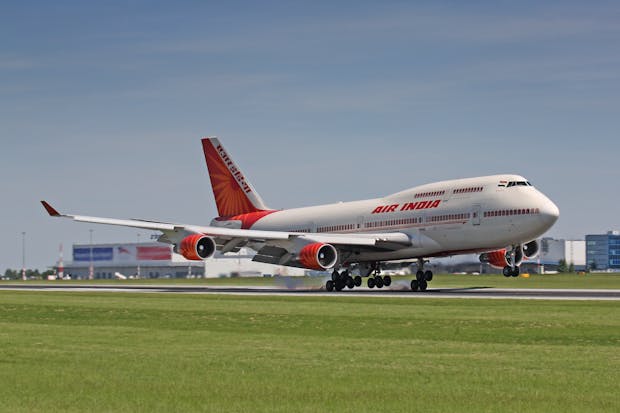understanding Air India’s return home

understanding Air India’s return home
understanding Air India’s return home
the Maharaja has returned home to the Tatas. for the past two decades, the Indian government has been trying to sell Air India. in its latest attempt, launched in January 2020, the state-owned flyer finally found a buyer.
to attract buyers, the government in January 2020 decided to split off the part of the airline’s considerable debt into a government-owned holding company created specifically for that reason. later in October last year, the government allowed bidders to propose the amount of debt they’d take on. this sweetened the deal.
SpiceJet’s Ajay Singh and the Tata Group were the final contenders, in which the Tata Group offered the winning bid of ₹180 billion and won over Singh’s ₹151 billion.
naturally, this has got Indian aviation buzzing. but what does this deal mean for the airline, and for the Tata Group that had founded the airline in 1932 and its loss had left JRD Tata bereft? let’s break it down.
what it means for Air India
the sentimental value aside, this is good news for the carrier that was running in loss even before the pandemic hit the industry.
Air India has 141 aircraft, of which only 118 are fly-worthy. the airline, under the Tatas, will go through fleet upgrades and maintenance. Air India employees have been guaranteed employment for at least a year. Upon which, they could be offered voluntary retirement schemes.
along with provident funds and gratuity dues, the government will also provide post-retirement medical benefits for the staff. troubles, however, aren’t still over for the Air India employees. they have to vacate the official quarters within six months. a strike is also being planned for November.
what this means for the Tata Group
Tata Sons, through its wholly-owned subsidiary Talace Pvt Ltd, submitted the winning bid and will take up 100% ownership.
Air India has been struggling to repay debt since its merger with Indian Airlines in 2007. as of August 2021, it has a net debt of about ₹61,562 crores, of which the Tatas will have to clear ₹15,300 crores. the group will also have to pay ₹2,700 crores to the government in cash.
the Group is yet to reveal its plans with the airlines and the splitting off of the debt has made things a little easier, but the airline still owes a significant amount to its creditors.
with this acquisition, the Group will have three airline companies under its umbrella. there is Air Asia where it holds 84% and Vistara, which is a 51:49 joint venture with Singapore Airlines.
put together, Air Asia, Air India, and Vistara will have a combined market share of 26.9% according to analysts. this will make the Tata Group the second-largest player in the domestic airline space after IndiGo, which holds a 58.6% share.
but integrating Air India with its other airlines will be a key challenge for the Group.
challenges for Indian airlines
the Indian aviation sector is staring at losses worth ₹26,000 crore in this fiscal. rising fuel prices were already a pain point for the sector and the pandemic-led lockdowns only added to their troubles.
the debt woes have existed in India’s airline industry since 2011, which is when Vijay Mallya’s Kingfisher Airlines started missing tax payments. its bank accounts were frozen and its flying licence was canceled in October 2012.
Jet Airways quickly followed with its loan crisis. it had to cut back on international routes due to pricing pressures, while low-cost airlines affected their domestic business too. the airline was grounded in 2019 after it failed to repay bank loans.
by then, the airline had piled up debts of about ₹8,000 crore. in 2020, relief was in sight after the Kalrock-Jalan consortium won the bid to revive the airline. former Jet employees are now waiting for their salary dues of ₹52 crore to be released.
the pandemic made it worse
the lockdown led to losses of ₹15,000 crore in FY21, according to the civil aviation ministry. here, IndiGo suffered losses of ₹5,830 crore, Air India had losses of ₹4,700 crore, while Vistara took a hit of ₹1,600 crore.
yet there’s optimism in the market
stock market investor Rakesh Jhunjhunwala is launching his low-cost airline Akasa that will fly next year. with this, by April 2022, India will have eight scheduled airlines including IndiGo, Air Asia, Vistara, SpiceJet, Go First, Jet Airways, Air India, and the newcomer Akasa.
market leader IndiGo may see an increase in domestic competition from Akasa, which will be an ultra-low-cost carrier. on the international front, it will see Air India re-emerge to compete.
in the first seven days of October, 1.7 million passengers flew domestically. the load factor is up, which shows that airlines sold most of their seats. according to ICRA, the aviation industry is expected to witness strong year-on-year growth of passenger traffic by 45-50% domestically and 80-85% internationally during 2021-22.
with the increasing vaccination rates and the partial lifting of bans on international travel, the future of Indian aviation looks brighter.



